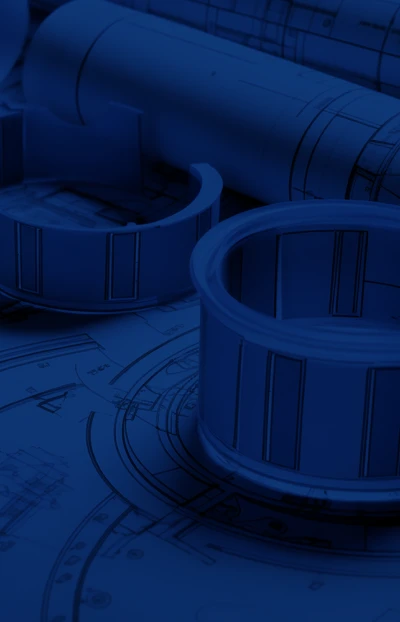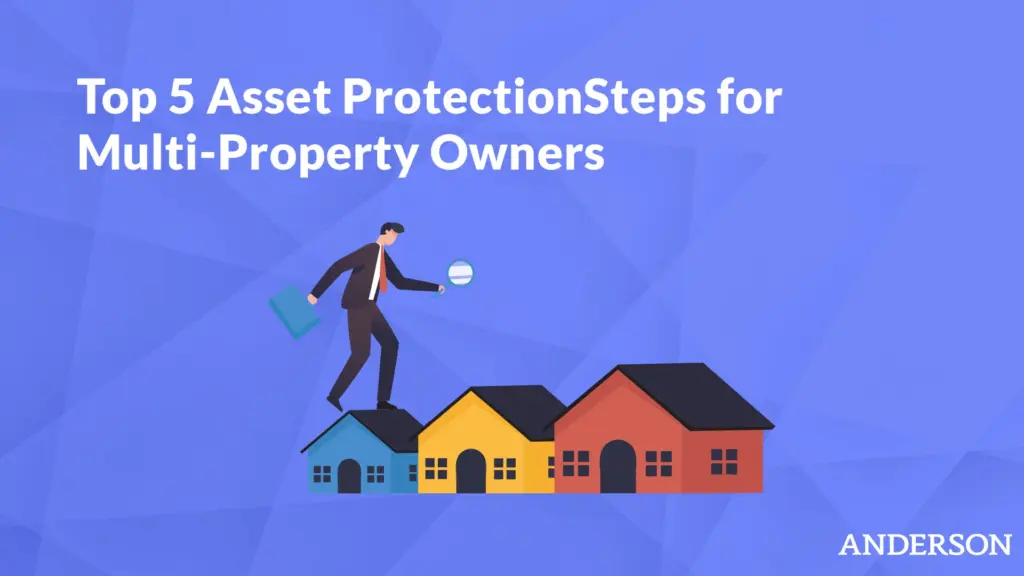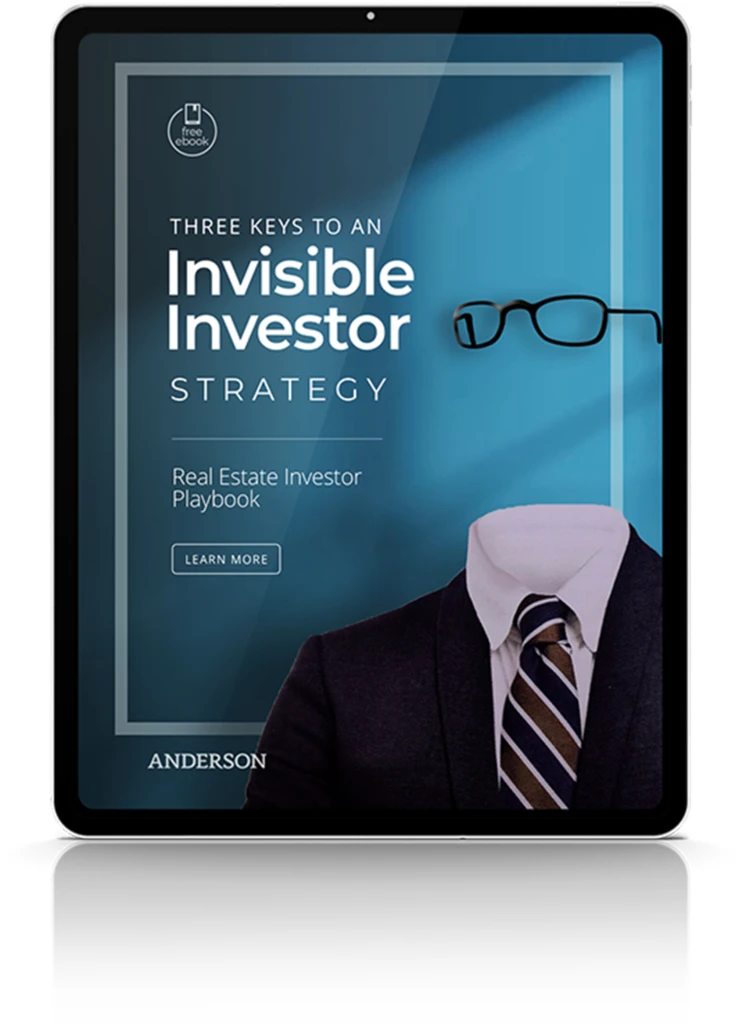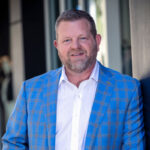

In this special episode, tax attorney Toby Mathis, Esq., shifts focus from financial health to physical health by welcoming William Donovan from the Pritikin Longevity Center to discuss America’s number one killer: cardiovascular disease. William shares his personal story of reversing heart disease and eliminating the need for bypass surgery through lifestyle changes at Pritikin, explaining how their medically supervised program has helped thousands achieve remarkable health transformations. The conversation covers the alarming statistics showing that 50% of heart attack victims had normal cholesterol levels, the critical role of endothelial function and arterial plaque, and why traditional risk factors don’t tell the whole story. William explains the Pritikin Program’s three-pillar approach, combining a whole-food, plant-based diet low in calorie density, daily exercise routines including resistance training, and comprehensive lifestyle education. They discuss how participants typically see dramatic improvements in just two weeks – lowering cholesterol by 23%, reducing blood pressure, eliminating medications, and reversing diabetes. With insights on inflammation, the dangers of processed foods and added oils, and the importance of getting professional medical guidance, this episode provides actionable strategies for anyone concerned about heart health, especially business owners and investors who need to protect their most valuable asset: their health.
Highlights/Topics:
- 0:00 Heart Disease Statistics and Personal Story
- 3:40 What Pritikin Does and Nathan Pritikin’s Story
- 12:45 Opening the Center and 60 Minutes Validation
- 19:40 What Happens in One to Two Weeks at Pritikin
- 30:20 The Challenge of Getting Healthy in Modern Society
- 36:45 Inspiring Success Stories
- 39:20 GLP-1s vs Lifestyle Change
- 42:50 Three Big Myths About Heart Disease
- Share this with business owners you know
Resources:
Schedule Your FREE Consultation
Tax and Asset Protection Events
Full Episode Transcript:
Toby: Hey, guys. Toby Mathis here. Today we are going to be talking about something that is absolutely startling, which is about 3.1 million people every year that pass away, about 680,000 of those pass away from heart disease. It’s still the number one killer of Americans, and every year an estimated 350,000 people die from something called sudden cardiac death.
This is where it gets really scary. About half of those, there’s no symptoms. It’s just boom, 150,000 people a year, boom. The first time they realize there’s something wrong is they’re gone. They pass away. This is near and dear to me because I actually had a heart attack less than six months ago, and I know it just sneaks up and wham, it just changes your life. I’ve been looking in, studying, and trying to figure out what I can do to reverse it. I came across Pritikin. I am really lucky to have the president of Pritikin, the Longevity Center in Miami, Bill Donovan coming in. Bill, first off, welcome.
Bill: Yeah, thanks for having me.
Toby: Today it’s going to be fun. It’s a little different. A lot of people say they know me as a tax guy, as a business guy, but I always look at there are four types of wealth. There’s your financial wealth, your social wealth, your time wealth, and that health wealth. A lot of times we throw time and health to the wind in exchange for the money and the fame.
We’re going to be focusing today on going back and looking at that health critically and what executives can do, what investors can do, to make sure that they don’t have problems. Without getting too far into the weeds, can you tell people what Pritikin does? Maybe we can dive into who Pritikin was and what this center actually specializes in.
Bill: I think the first thing to just acknowledge is that a large percentage of heart disease is preventable. It’s a lifestyle disease. Eighty percent of lifestyle disease is proven to be from lifestyle, 20% of that is genetics. We can’t control it as well, but there’s a big chunk that is preventable, and that’s what Pritikin’s all about.
There’s one truth that we hold above all else, and that is you have the power to change the trajectory of your health. That’s what Pritikin does. It’s simply no other place out there in that it’s a residential program. It’s a luxury environment, but it’s a place where you get away from the world. You learn about your health through lectures, through workshops. You invest in your health through good food and fitness and under the supervision of our board certified physicians in cardiology, endocrinology, working with exercise physiologists, nutritionists, behavioral health folks. They teach you and show you how to improve your health.
It’s not something you just feel at the end of the stay. It’s actually something in your vitals, in your blood work. That’s what we’re doing day in, day out. There are over a hundred studies supporting the program at this point in time.
Toby: Yeah. Just full disclosure, I’ve been to Pritikin. I went two weeks a couple of months ago. A very good friend of mine has been telling me to go there for years and years. It’s embarrassing. I probably would’ve caught this thing, not probably. I would’ve caught this thing had I listened to him. I’m going to say to anybody out there that has any heart issues or whatever that you should actually consider this.
It was interesting. I was in the hospital after having the heart attack, and somebody gave me a book from a gentleman of the name of Dr. Greg called How Not to Die. In the first chapter, it went right into you can reverse heart disease. He was talking about his grandmother who had been sent to hospice care. She ended up living a couple decades longer just simply by changing her diet. I know that that was what Pritikin is really known for. They call it the Pritikin diet and these types of things, but it’s focusing in eating differently to reverse what we’ve done to ourselves our entire life. Maybe you could talk about that a little bit.
Bill: Yeah. It’s a great point. One thing to highlight is a lot of folks think of Pritikin as a diet, but it’s not. It’s actually a lifestyle. It’s diet, it’s fitness, it’s nutrition. There’s a big component of medical testing and oversight that goes along with it. It is so much more than just a diet, even though from history, that’s what we’ve been known for.
Maybe it’s really helpful to start with where this came from because Nathan Pritikin really is a fascinating individual. This is a guy that’s an engineer, and he’s got patents in photography, submarine detection, automotive technology, and always very interested in health. During World War II, he’s working with the Air Force doing optical systems for precision bombing and had access to all this information because of his interest in health. They were actually monitoring health around the world.
One of the things they thought during World War II is the belief was that heart disease was due to stress and heredity, and that’s it. The expectation was during World War II that we’re going to see a massive spike in heart disease because of the stress of war. What they saw was exactly the opposite. In places like the United Kingdom in particular, they saw a having of heart disease and diabetes for that matter.
Really what delving into the research that Nathan started to understand was it was because there were restrictions, there were austerity measures and things like animal-based protein wasn’t available. Saturated fats, cholesterol through animal based protein was rare. There was a massive decline and a lot of more of a gearing towards plant-based things that were more readily available, less expensive. That’s an initial inkling.
You fast forward about a decade later, Nathan Pritikin is diagnosed with coronary insufficiency. He’s 40 years old. He’s in pretty good health in his view. He’s not heavy and he’s got heart disease. It was not pumping enough. He couldn’t believe it. He got multiple second opinions. It ultimately took it into his own hands to try and get better because the doctors told him, don’t walk more than four blocks a day, you might drop dead, and you got to take medications. We don’t know what to tell you. It’s here hereditary, you can’t control this.
From all this research, from his experience, he used himself as a guinea pig. He started to eat differently, move to a plant-based diet, cut out the ice cream, the animal proteins, and started to see benefits. His cholesterol was around 300 at that time. For us, right here, we’ll say that’s high, but back then that was normal.
He was at the upper limits of normal. He started to see a reduction. It went down to about a hundred, and then he started over over a couple of years. He started to introduce exercise again. Again, he was fearful of exercise because they said you might drop dead. He started to go four blocks to six blocks, to eight blocks walking a mile. Within a year, he’s walking four miles, and then he started taking up running.
What happened is he started to see a significant improvement in his overall cardiovascular function through stress tests. This really keyed him in on this space. He retired in 1967 from work, but he was very passionate about this space.
He started to self-fund studies. One of the big ones was in Long Beach, the largest VA in the world, in Long Beach, California, where he had 19 people on the program at his approach and 19 people in the control arm. They saw significant improvement in things like weight and insulin medication reductions and blood pressure reductions, reduction of blood pressure medications.
There was this massive improvement. He presented that at a conference in Georgia. All of a sudden, it got rated as the number one presentation during the hundred presentations or so that were at this conference. It got all picked up on the press, on the Newswire, and now all of a sudden he’s getting thousands of calls from around the world for people asking him, what is this approach that we can take to improve our own health?
At the time, medicine was really about surgeries and taking it easy. Here’s this guy that is showing the ability through diet and through exercise to really significantly step change their health. Two weeks later, he decided to open up the center. In 1975, he organized and opened its doors in January of 1976. As we sit here today, we’re celebrating the 50th anniversary of the Pritikin Longevity Center. There are now over a hundred studies support exactly what Nathan knew back then.
We’re continuing to carry on his legacy and continue to see the same results. People coming in all the time to improve their cardiovascular health. We see reductions in cholesterol and blood pressure, people coming off medications in the early as a week. You might be on a blood pressure medication for a decade, and just the low salt regime associated with the diet here leads to a significant reduction in your blood pressure.
Toby: It’s been around for 50 years. I know that you guys have been featured. Didn’t they have you on 60 Minutes on a few occasions and things like that?
Bill: Yeah, I think it was 76. There was a 60 minutes story that was done, Morley Safer, and it was following three gentlemen that actually were taking nitroglycerin pills that had cardiovascular disease and were meant to go in for surgery. Their last shot was to go to this new center that opened up in Santa Monica on the west coast, and they spent four weeks there. They followed these people. These are people that were struggling to walk for more than a few minutes without getting winded having to stop again. They were taking medication.
What he was able to do over the period of four weeks was significantly improve their cardiovascular function. You have people walking miles now without issue. The story went out. It was transformational for these three people. It was almost unbelievable, and it flew in the face of the medical community’s view at the time about what you could do to reduce cardiovascular disease. Again, the view was his only medication. Lifestyle didn’t have a role to play in this.
The 60 Minutes folks got all types of letters saying, this is ridiculous, we can’t believe you published this or showed this. A year later they did a follow up. They followed these three people back at their homes. Two of them were completely off their nitroglycerin medications. One of them was mostly off of it. They were walking miles a day, exercising miles a day, feeling good, feeling vibrant, feeling energetic. It was clear that the lifestyle changes they had made had significantly enhanced their health. That really ushered in even more interest in what Nathan Pritikin was doing and also studies. It inspired lots of work and research.
One of the best things that happened through the 80s was that we really started to get an understanding of the role in diet and lifestyle in these diseases like heart disease and diabetes. We recognized that these things have a powerful role to play in helping to prevent them, manage them, and in some cases reverse the symptoms and reverse the risk of them.
Toby: By the way, just for people to understand, Pritikin does intensive cardiac rehab through a ton of hospitals too. This is not a, hey, this is just one place you go to, but you guys are all over the country and lots of hospitals that follow your methodology, right?
Bill: Yeah. Our center here called the North Star, this is where the company was born, it’s all out of pocket. People come here. It’s a luxury environment in a beautiful space, again, overseeing medically supervised by doctors with all these nutritionists and exercise physiologists. All of the nutrition and the food is provided by our culinary experts. It’s a full immersive experience.
One of the things that spun off from here just over a decade ago was the cardiac rehabilitation program. That is a separate company that spun off from Pritikin. What they do is license. They’ve created a program that is actually for folks that don’t know cardiac rehabilitation, it’s 36 sessions after you have an event, usually in a gym based center at a hospital location. Intensive cardiac rehab is a layer on behavioral education, so nutrition, fitness, mindset, and things of that nature.
A curriculum has been built up and provided now to hospitals so they can add that intensive part onto the solution they have. Again, it’s reimbursed by Medicare. It’s one of only three programs for cardiac rehabilitation that are reimbursed, which again speaks to the science behind the program, the proof of the efficacy of the program.
Toby: Folks that are listening out there, I just want to give you an idea of where I’m coming from because I experienced this firsthand, but the reason that I’m bringing it out to the audience is because the results that I’ve been seeing and the results that I know that you’ve achieved are pretty extraordinary. In fact, just to give an idea, if somebody’s walking around out there, maybe they’re pre-diabetic or diabetic, maybe they’re having some issues with their health, maybe they have a spouse who’s doing like the, hey, come on, get yourself, what actually happens in a week, two week period of time when people go there? What are some of the stats?
Bill: Yeah. I guess that really depends upon what the goal is of the person coming in. We have folks that come here that just are trying to hang on to the good health they have, the prevention side. Those are folks that are coming in. A lot of times those folks come in because it was a family member that came through many years before. It could be a parent, a grandparent, or something. That’s one group. The second group is usually people that are trying to heal. They’re folks that have got some bad news. Hopefully they have not had an event like in your situation, but maybe their blood markers are changing, or they’ve got high cholesterol. That’s the folks that are coming in.
Typically when folks do come in, one of the things we do, this is unlike any other place in that when you do come to this luxury environment, the first thing we do is take your blood. We put you in, and we have an exercise tolerance test done. We do that on exit as well. We’ve taken the blood work on exit. We also take your vitals, so your blood pressure, your weight, things of that nature.
Typically what we’re seeing here, the average day is about two weeks, which you did. Some folks stay for a week. We’ve had some folks that stay for months at a time. Consistently what we see is significant reductions in weight. We see reductions in blood pressure. We have people that come in on high blood pressure, medications, been doing it for a decade.
Within a week, we start to have to titrate that down, sometimes take them off of those blood pressure medications because the approach in our diet is that we don’t have any added salt. Salt is everywhere in our diet in the American culture. When you have high blood pressure, it’s something that you really want to cut back on. This is an 80% reduction in salt intake you’re going to have while you’re in our program versus what you normally would have.
Immediately we see blood pressure coming down. We see diabetes medications coming down because of the nature of no added sugars into our program, into our foods. Food is medicine here. It really is amazing how quickly you can respond by eating plant-based whole foods. We have animal protein of course, but it’s lean animal proteins, fish, chicken breast, and things like that. It’s really done well. You would think you don’t add salt, add oils, or minimally added sugars. This can’t taste good, but really it is extraordinary how good it can taste when you put culinary innovation into it.
Again, the body responds so quickly to just feed, nourishing it well. One thing that’s great about the human body, it is adaptable, it responds fast. Once you wean yourself off of all the things that are making us unhealthy, the body does respond quickly.
I had one person coming in recently that came in at 192 cholesterol on statin for the last 15 years. Upon exit, which is only a week, so they come in on Monday, got their blood work on Friday, they did their blood work and their cholesterol had dropped to one 40, which is extraordinary in just one week. That’s not the norm. It’s usually a 10% or 15% in a window like that, but that was an extraordinary result.
The interesting thing, which you might say, hey, did he come off his blood pressure medications, I shouldn’t say that. I think what you would ask is, did he come off of his cholesterol medications? The answer is no because one of the other things he did while I was here was he got a CT calcium scan in association with the hospital we work with here. There’s a center here where we can send folks just five minutes away. He found he had a large amount of calcification in his LID, his lower interior descending artery, the widow maker. That’s a scary one because that’s why they call it that. That’s the one worth $150,000 as you mentioned.
A high calcium score is 600, which is severe. Instead of actually getting off medications, he’s actually been seeing his medications quadruple because really when you have that situation, you want to take that LDL down below about 55 is the current guidance. What we’re learning with that person is that the diet alone was not enough. That medicine also is critical part of it. A lot of times people with the lifestyle approaches they take can wean off of some medications, but in some cases, we’re following the science always. We have to go back on them. We maybe increase them or go on new ones to try and achieve the targets that we need to achieve to help prevent these diseases from progressing or an event happening in the future.
Toby: Yeah, and you’re putting people into basically a laboratory. It’s not a hospital, guys, it’s a spa. It’s at Doral. You’re looking out at the blue monster for all you golfers out there. This is what you’re being fed and they’re checking your vitals. I know that when some people are exercising, they’re being actively monitored as well depending on your situation. Then they can measure it. You don’t have the, hey, I went out and had a big old steak dinner last night, or I had so much salt that I’m swollen up like a balloon. Now you’re actually saying, here’s what your body will do if you feed it right. You’re putting it in a nice context so you’re like, okay, this is what you could do.
Bill: One of the things to think about is that it’s hard to get healthy in our society. One of the things I’m asked is, we’ve known now for 50 years what it takes to be healthy and to prevent disease, yet in this last 50 years we’ve seen obesity triple, we’ve seen diabetes triple. We’ve known the answers for a long time, but we haven’t been able to heal ourselves and to prevent these diseases. What’s going on?
There are really two things to recognize that. First of all is the environment, the food options we have available to us in the market, the super size high fat, high salt, stuff that tastes really good. That’s one thing. Our healthcare system is built around sick care, not healthcare. There’s not a lot of prevention guidance you’re getting with your doctor. They’re helping heal you when you’re sick.
Over 50 years ago, if you look at the nature of work just coming out of World War II, actually, about 80% of that was manual labor, 20% was sedentary work. That’s actually now flipped. Eighty percent of our work today is sedentary, 20% is physical labor. We’re burning less calories. We have all the food we possibly need. We can do Uber Eats to have it arrive right at our computer while we work it from home all day long. We’re eating more unhealthy, we’re actually moving less. That’s what’s driving it. That’s an environmental thing.
The other thing is the psychology, the physiology of our body from our caveman days, our wiring. We get a positive response, an open response when we eat salty high fat food. The premise is that we want to stockpile calories when times are good because there might be a famine right around the corner. We get a reward for that. The same time, we’re wired to conserve energy unless we need it because we need to keep those calories. Unless we need to hunt, forage, escape danger, we’re going to conserve those calories.
Today we live in an environment where there is no famine. Food is plentiful, and we have to go out and go to the gym or work to find different ways to move. There’s also a sense of optimism because fortunately, most of us grow up healthy. In our twenties, we’re almost invincible. We heal, we bounce back quickly. There’s this sense by the time you get to 50, the curse and the blessing of youth is that you felt good and you were always healthy.
The reality is, as we mentioned earlier, you start to pay the debts of your lifestyle when you start to get to 50. We start to see these abnormal biomarkers. You find that you put on weight, you become at risk. You see people around you fall down ill. Recognizing that there’s this environmental thing and this psychological thing, those are the two things working against you. What we’re trying to do is help people rewire and understand how they can eat in this world so that they can be healthier.
One of the nice things about the program is that it’s a closed environment. We are able to show you and protect you from the outside world and to show you the success. The great thing, the most motivating thing is the success you see when you come out. People are feel empowered when they walk out the door and they’re like, wow, that blood work, I can’t believe what I’ve seen in terms of results in just two weeks. They realize they can do it. It’s possible, and that’s one of the most critical benefits of the program in my view.
Toby: Then you know and you’ve seen it, and now you know what your body will do when you do it right, so now you’re more likely to continue to follow that particular lifestyle.
Bill: Probably a hundred thousand people have been through the center in the last 50 years. The stories are countless. I’ll tell you one thing though. I went and I visited a 98-year-old past guest. He’s 98 now. He started coming when he was 50. That was on the west coast. His cousin was a neighbor of Nathan Pritikin, had a heart attack and was working with Nathan Pritikin.
It was a funny story. He said, I went and visited my cousin on the west coast. He introduced me to Nathan Pritikin. One of the things Nathan had done was prescribed his cousin’s mailbox to be two and a half miles away from his home. What that forced him to do was to walk two and a half miles to get his mail. That was one of the memorable stories that I remember.
I asked him specifically. I said, based on your experience of coming to the center, what was the most inspiring story you heard from fellow guests in the program? He told me this story about a football coach. This appealed to me a little bit being Irish. It was an Irish football coach out of the Chicago area that had a heart attack in his forties. His dad was a butcher, meat and potatoes guy, probably eaten meat and unsaturated fats his entire life.
Doctors said they really couldn’t do anything anymore. He couldn’t really walk a couple 10, 15, 20 yards without getting winded. He was going to retire from football coaching, didn’t know what to do. A friend of his from college had reached out and said, listen, you need to go to Pritikin. The guy said, I can’t even move and I can’t pay for it. His friend said, don’t worry about it. He was an investment banker, I’m paying for it. He sent him to Pritikin for four weeks.
When he first got here in Santa Monica, there was about 16 stairs to the reception. He could only go three or four stairs before he had to stop and take a break, go another three and four, and take a break. This Irishman is telling this story upon exit from the program of how he came into the program. By week four, he was running and jogging again. He was not going back to Chicago to retire from football. He was going back to take up his job again.
When I talk about an inspiring story, that was one that stuck with this 98-year-old who’s been coming here for almost 50 years. Those stories play themselves out over and over here. We have people coming in and transforming their health. Again the important thing to highlight is the body can respond. I said it before, the body responds quick. We have an amazing capacity to heal, adapt. If we just nourish it right and we do the right things, we can really move the needle.
Again, whether it be medication reductions, whether it be the capability to have some more cardiovascular fitness to be able to move more quickly, we have people that will stop using canes. They build up strength while they’re here. These are things that are happening all the time. Again, you can be a healthy person coming in, just a 20-year-old coming in just to stay healthy and learn the life lessons, how to maintain it for your entire life, or you can be someone who has a problem. We see all the entire spectrum come and visit here.
Toby: Nowadays, everybody’s looking at these Ozempics and all these GLP-1s. What is the difference between going to something like a Pritikin?
Bill: They’ve taken the market by storm. Science has shown that GLP-1s can be a really effective tool in helping when used with exercise and a restricted calorie diet. It’s a very effective pool for weight loss and diabetes management. That is clear. The science is strong. You have to remember every single package insert does say this is meant to be as an adjunct to a reduced calorie diet and to exercise. It’s not one without the other.
Think of it like your GLP-1s without diet and exercise is like paying rent. You get the benefit. It works while you pay, but you don’t build any equity. Really, lifestyle change is the thing that gives you that lasting equity. When you think about it, lifestyle change is the foundation, the bedrock of good health. A GLP-1 is a fantastic tool that can help turbocharge it, but what you don’t want to do is do one without the other.
You don’t want to do GLP-1s without diet and exercise. The reason for that is a couple of things. Most importantly, when you lose weight on a GLP-1, you are not exercising, not working your muscles, and not eating enough protein, you’ll lose a lot of muscle as part of that weight loss. If you lose 50 pounds, you might lose up to 40%, it will be muscles. Twenty pounds of that can be muscle, 30 pounds of that should be fat.
If you come off of that medication at some point in the future, what we know and what the data shows, two thirds of people gain back the weight within the first year. They’re going to be gaining back fat, not muscle because you’re still not exercising and not working those muscles and building them. The important thing is you want to add lifestyle change in because that will help to help ensure that you have a healthy weight loss while you’re on those GLP-1s. If you ever decide to go off of them, the only way you’re going to have lasting success is if you made those lifestyle changes that allow for you to consistently keep that weight off.
It is great addition to the tools that we have now to manage these conditions, whether it be obesity, whether it be diabetes. The important message that needs to get out there is that it really needs to be in every single study done. In every single, like I said, package inserts tells you that it needs to be done in collaboration as an adjunct to diet and exercise
Toby: Bill, we talked at one point about the myths that are out there. There’s a lot of misinformation, bad information, just we all grew up. It seems like it’s a burgeoning area, but heart disease, diabetes, our health, and everything else. What are the three big myths that you guys see?
Bill: I think one myth is that you can’t get off medications once you start. We’re good at doling out medications in our healthcare environment and very seldom going on a cholesterol medication. There’s not really an expectation. You’re going to get off that, you’re going to do that for life or insulin medication. The reality is what we’re able to show, what we do every day here in the center is that you can actually wean yourself off of some of these medications under the guidance of a doctor if you are actually engaging in a healthy lifestyle diet exercise. That’s one thing.
The second one is that heart disease is inevitable with age. The reality is there is, we’ve known 80% of it has to do with lifestyle and it’s not inevitable. There are some people that are predisposed to it based upon genetics, but it is not. Again, it comes back to lifestyle. I know in the Blue Zones they live up to 10 years longer than people typically in the US. Heart disease is very rare. Again, it’s a high plant-based whole foods type of diet, and people don’t stop moving. It’s all the things we’re teaching at Pritikin. There’s a lot of similarities.
The last thing is some folks say I’m too old to make a difference, get benefits. They get to a certain point, it’s like, I can’t really do much about this. The reality is you can. The body, again, responds quickly. It has an amazing ability to adapt. We’ve seen studies of people in their nineties who do a 12-week fitness regime. They’re improving balancing, improving power, improving muscle mass, balance, fall protection, and all these things. The capacity of the human system to grow, to expand, to improve extends well into your nineties.
The reality is there are myths out there, but it’s all about empowering people, helping them understand the path and how to do this so that they can reverse the course of their health and move it in a different direction so they can live a long, healthy lifespan as well as have a long, healthy health span.
Toby: The big takeaways is that, yes, you can reverse heart disease. Yes, you can reverse things even with diabetes. I saw it. I saw people, while I was there, literally get off of high blood pressure medications because they were getting lightheaded in the morning. It just dropped like a rock just through diet and a little bit of exercise.
The big takeaway is, yes, you can give yourself a lot more years. Even more importantly, there’s a difference between lifespan and health span. A lot of us focus on the lifespan. We’re always like, oh, my life expectancy is. But if you are really sick those last few years, it’s not a great quality of life. What this really comes down to is your health span, you can actually affect.
I was drawn to Pritikin not just because I had a friend, it was in a book, and I kept coming back to the same thing. Having been there, I was like, yes, I know this works. I’m not saying everybody run and go to Pritikin. What I am saying is that for you out there that are listening, yes, we have control over some of these things. A lot of times we’re led to think that we don’t, and it’s scary.
When you have a disease like coronary heart disease come up and you’re like, what do I do, I didn’t know, I didn’t have high blood pressure, I didn’t have a high cholesterol or anything, I had hereditary marker that was completely missed, now that I know I can do something about it, okay, I’m going to have decades left because I’m doing something about it, and it’s on my radar. If you want to get it on your radar, Pritikin’s a great place to go. If you don’t, you may end up working with Pritikin anyway if you’re in their cardiac rehab. Hopefully that doesn’t happen for you.
The takeaway is you’re in control and you can do something about it. Bill, thanks for joining us. I’ll put your contact information so people can ask questions. If you do have questions, throw it down in the comments too. I’ll point it at Bill. If you have questions about your scenario, you want them to help you, just put it down in the comments. I’ll make sure that they get a link so that Bill and his team can go in there and answer your questions.
It is inclusive. It’s the doctors, the nutritionists, it’s the culinary folks, everything all in one. I can say it as a personal testimonial. It’s a great experience. You’ll be glad that you went if you do go. If you don’t, just know that you can do things. Thanks again, Bill.
Bill: Yeah, you bet.












